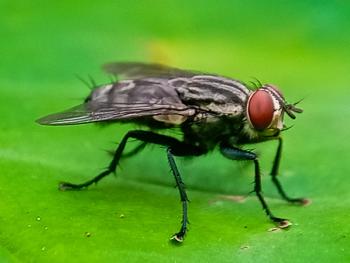
CVC Central 2007 Highlights: Answers to three commonly asked questions about Lyme disease
Obvious clinical signs may be apparent in only about 5% to 10% of dogs infected with B. burgdorferi. So the harder question is, how should we manage the vast majority of infected dogs that show no clinical signs?
Dogs with clinical signs of Lyme disease should be screened for exposure to Borrelia burgdorferi, the disease's causative agent. If these dogs have positive test results, they should be treated with antibiotics, either doxycycline or amoxicillin.
But obvious clinical signs may be apparent in only about 5% to 10% of dogs infected with B. burgdorferi.1 So the harder question is, how should we manage the vast majority of infected dogs that show no clinical signs?
SHOULD I SCREEN ASYMPTOMATIC DOGS FOR LYME DISEASE?
I would definitely recommend screening dogs suspected of being exposed to B. burgdorferi for two reasons. Obviously this is necessary if a dog is going to be treated based on a positive test result. Such screening can also serve as a useful marker for Lyme-infected ticks in your region and further the success of your tick control program even if you are not going to use the information for treatment purposes.
SHOULD I TREAT AN INFECTED ASYMPTOMATIC DOG?
The answer to this question is still unclear. Ideally, we would approach the question from a risk-cost-benefit standpoint. We do know the following:
1. With or without treatment, dogs with Lyme disease may remain infected with low numbers of B. burgdorferi.2
2. Evidence suggests that in many cases treatment tends to lower Lyme antibody titers faster than they would decline without treatment.3 This more rapid decline may be true for bacterial load as well as for antibody titers.
IDEXX Reference Laboratories, which offer the quantitative C6 assay, recommend considering treatment when canine antibodies against the Lyme C6 protein are > 30 U/ml.
I am not sure we have enough evidence to make a fully informed decision about treating subclinically infected dogs. As we gain experience in this area and as controlled field studies are published, we will have a better understanding of how to answer this question.
HOW SHOULD I MANAGE DOGS IN ENDEMIC AREAS FOR SUSPECTED LYME NEPHRITIS?
Circumstantial evidence exists for a connection between Lyme disease and glomerular-tubular disease in dogs, and there are many anecdotal reports of a similar clinical syndrome in Labrador and golden retrievers and other breeds in Lyme-disease-endemic areas. We know now that anti-Borrelia burgdorferi antibodies are present in the kidneys of dogs with Lyme nephritis, but we do not yet know whether it is really just Lyme disease or if Lyme disease is the whole story. Given our current state of knowledge, the following are my recommendations for screening and treating dogs with suspected Lyme nephritis:
1. Monitor dogs in endemic areas for Lyme infection.
2. Screen all dogs with positive Lyme disease test results for proteinuria or microalbuminuria. Likewise, screen all dogs that present with proteinuria or microalbuminuria for borreliosis.
3. Consider treating any dog that has positive results for both borreliosis and proteinuria or microalbuminuria with doxycycline for four to six weeks.
4. If the proteinuria persists or worsens (based on a urine protein/creatinine ratio), continue the doxycycline and consider converting the dog to a low-protein diet and initiating angiotensin-converting enzyme inhibitor therapy. Also consider performing a renal biopsy. If the histology results are consistent with an immune complex glom erulonephritis, consider immunosuppressive therapy in consultation with a veterinary internal medicine specialist.
Richard E. Goldstein, DVM, DACVIM, (small animal internal medicine), DECVIM-CA, Department of Clinical Sciences, College of Veterinary Medicine, Cornell University, Ithaca, NY 14853.
REFERENCES
1. Levy SA, Magnarelli LA. Relationship between development of antibodies to Borrelia burgdorferi in dogs and the subsequent development of limb/joint borreliosis. J Am Vet Med Assoc 1992;200(3):344–347.
2. Straubinger RK, Summers BA, Chang YF, et al. Persistence of Borrelia burgdorferi in experimentally infected dogs after antibiotic treatment. J Clin Microbiol 1997;35(1):111-116.
3. Goldstein RE, Atwater DZ. Serology and circulating immune complexes in dogs naturally infected with Borrelia burgdorferi before and after doxycycline therapy (abst), in Proceedings. Am Coll Vet Intern Med Forum 2005.
Newsletter
From exam room tips to practice management insights, get trusted veterinary news delivered straight to your inbox—subscribe to dvm360.





